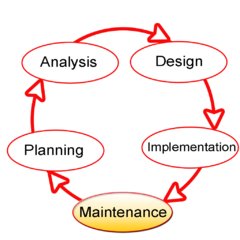Seminar on SDLC
The Systems Development Life Cycle (SDLC), or Software Development Life Cycle in systems engineering, information systems and software engineering, is the process of creating or altering systems, and the models and methodologies that people use to develop these systems. The concept generally refers to computer or information systems. Emphasis on this article (SLDC) is on man-made technological life-cycle. But there are many other life-cycle models to choose from. This includes ecological life cycles, for every life cycle, whether biological or technological, has a beginning and an end.
In software engineering the SDLC concept underpins many kinds of software development methodologies. These methodologies form the framework for planning and controlling the creation of an information system: the software development process.

Systems Development Life Cycle (SDLC) is a process used by a systems analyst to develop an information system, including requirements, validation, training, and user (stakeholder) ownership. Any SDLC should result in a high quality system that meets or exceeds customer expectations, reaches completion within time and cost estimates, works effectively and efficiently in the current and planned Information Technology infrastructure, and is inexpensive to maintain and cost-effective to enhance.
Computer systems are complex and often (especially with the recent rise of Service-Oriented Architecture) link multiple traditional systems potentially supplied by different software vendors. To manage this level of complexity, a number of SDLC models or methodologies have been created, such as "waterfall"; "spiral"; "Agile software development"; "rapid prototyping"; "incremental"; and "synchronize and stabilize"
Power point presentation on Systems Development Life Cycle


0 comments:
Post a Comment